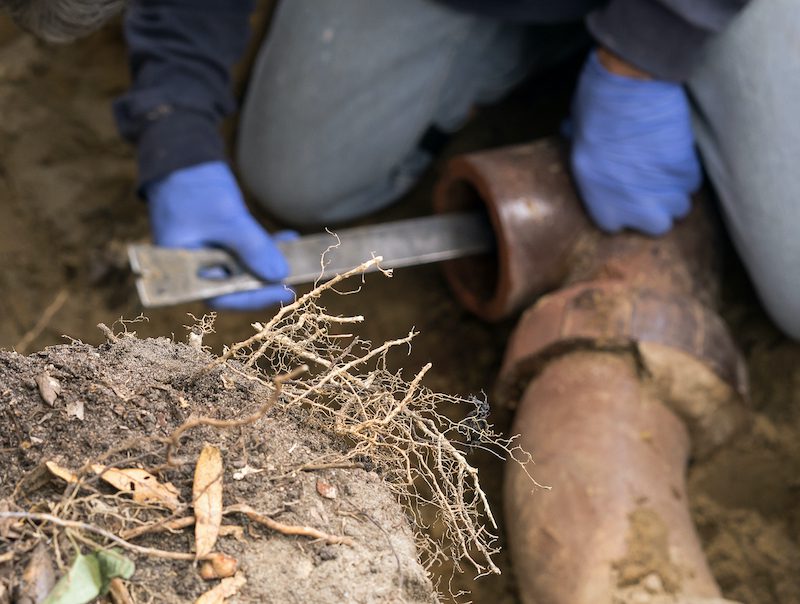Everyone may have their own idea when it comes to Main Plumbing Issues Found in Old Houses.

Older homes commonly include appeal, character, and background, however they can likewise bring a host of plumbing concerns. Whether you're taking care of maturing pipes, low tide pressure, or leaks, recognizing exactly how to address these usual problems is crucial to keeping a secure and practical home. In this guide, we'll discover the normal pipes difficulties encountered by older homes and supply useful remedies to keep your pipes in leading shape.
Comprehending Common Pipes Issues
Aging Pipelines
One of one of the most usual concerns in older homes is aging pipelines. Depending upon the era in which your home was constructed, the pipes might be made from products that have worn away gradually, such as galvanized steel, cast iron, or even lead. These materials can rust, become brittle, or develop leakages, causing water damage and prospective health hazards.
Water Top Quality Screening
Older pipelines can influence the top quality of your water. Conduct a water high quality test to check for impurities such as lead, rust, or various other pollutants that might be presented by maturing pipelines.
Solutions for Common Plumbing Problems
Changing Aging Pipelines
If your home has old, wearing away pipelines, consider replacing them with contemporary products like copper or PEX. This can be a substantial investment, but it will certainly prevent future issues and enhance the safety and security and integrity of your plumbing system.
Repairing Low Water Stress
To deal with low water pressure, begin by cleansing or replacing old fixtures and removing mineral accumulation in the pipelines. If the problem lingers, it might be required to replace sections of corroded pipelines.
Fixing and Changing Dripping Pipelines
For little leakages, you can make use of pipeline clamps or epoxy putty as a short-lived solution. Nonetheless, it's ideal to change dripping pipelines completely to stay clear of more damages.
Updating Fixtures
Upgrading old components to contemporary, water-efficient designs can enhance your home's plumbing performance and decrease water consumption. Try to find fixtures with the WaterSense label for the best efficiency.
Dealing with Pipe Corrosion
If your pipelines are corroded, changing them with corrosion-resistant products like copper, PVC, or PEX is the most effective remedy. Routine assessments and water high quality upkeep can assist avoid even more corrosion.
Low Tide Stress
If you're experiencing low water pressure, it could be as a result of natural resources, rust inside the pipes, or old fixtures that are no more working successfully. This can be a major hassle, especially in locations like showers and sinks.
Leaking Pipes
Leakages are one more regular issue in older homes, often brought on by rusty or worn-out pipelines. Even little leaks can cause considerable water damage, mold and mildew growth, and raised water expenses otherwise dealt with without delay.
Out-of-date Fixtures
Obsolete plumbing components such as taps, bathrooms, and showerheads not just look old however might likewise be much less efficient, vulnerable to leakages, or incompatible with modern-day plumbing requirements.
Pipeline Rust
Deterioration is a common issue in older pipelines, particularly those made from galvanized steel or actors iron. Rusty pipes can limit water flow, trigger staining, and ultimately lead to leakages or pipeline bursts.
Assessing the Problem of Your Plumbing
Checking Noticeable Pipes
Start by inspecting any type of visible pipes in your house, such as those in cellars, crawl spaces, or under sinks. Try to find indications of rust, leakages, or corrosion, which can suggest underlying problems.
Looking for Leaks
Check for leakages by inspecting areas around taps, toilets, and under sinks. You can likewise check your water meter before and after a period of no water utilize to discover surprise leaks.
When to Call an Expert
While some pipes issues can be managed with do it yourself remedies, there are times when it's ideal to contact a specialist. If you're handling significant leaks, considerable deterioration, or are uncertain concerning the condition of your pipes, an accredited plumber can offer experienced assessment and fixing.
Preventive Maintenance Tips
Regular Evaluations
Consistently inspect your plumbing system for signs of deterioration. Capturing problems early can stop pricey repair work down the line.
Water Pressure Regulation
Ensure your water pressure is within the suggested variety to prevent worrying your pipelines and components. A plumbing can set up a pressure regulator if needed.
Water Quality Maintenance
Install water filters or softeners if your water high quality is poor. This can safeguard your pipes and fixtures from damage caused by hard water or contaminants.
Aggressive Pipe Replacement
If your home has older pipelines, take into consideration positive replacement before major issues arise. This can save you from emergency situation repair services and water damage.
Conclusion
Dealing with plumbing concerns in older homes needs a combination of alertness, precautionary upkeep, and timely upgrades. By recognizing the common difficulties and understanding when to seek specialist aid, you can ensure your plumbing system continues to be practical and trustworthy for many years to find.
Common Plumbing Issues in Older Homes and How to Fix Them
Owning an older home in Australia comes with its unique charm and a set of challenges, especially when it comes to plumbing. The Sunshine Coast has many older properties that can harbour plumbing problems that aren t just inconvenient but potentially costly. Here s a look at some common plumbing issues in older homes and expert advice on how to handle them.
Outdated Piping Materials
Many older homes were built with galvanised steel, cast iron, or even lead pipes, materials that are far from ideal by today s standards. Galvanised pipes are prone to corrosion and clogging, while lead pipes pose serious health risks.
How to Fix:
Replacing old pipes is a job for a professional. Upgrading to copper or PVC piping not only enhances water quality and flow but also increases the property s safety and value. If you suspect your home has outdated materials, a licensed plumber can conduct a thorough inspection and recommend the best course of action.
Corrosion and Pipe Degradation
Over time, exposure to water and minerals can cause pipes to corrode, leading to leaks, bursts, and water contamination. Corrosion is especially common in homes over 50 years old.
How to Fix:
Regular inspections can catch early signs of corrosion. If corrosion is found, the affected section of piping often needs to be replaced. For homes with extensive corrosion, a complete plumbing overhaul might be necessary. It s crucial to consult with a plumbing expert to understand the extent of the issue.
Tree Root Intrusion
Older neighbourhoods usually have mature trees whose roots can intrude into pipe lines, causing blockages or damage. This is particularly problematic for sewer lines, where roots seek out water sources.
How to Fix:
A plumber can use a specialised camera to inspect sewer lines for root intrusion. If roots are a problem, methods like root cutting or hydro-jetting can clear the obstruction. In severe cases, part of the pipe may need replacing. Consider root barriers around the piping to prevent future issues.
Inadequate Water Pressure
Low water pressure in older homes can be due to various factors, including corroded water lines, sediment build-up in pipes, or outdated fixtures.
How to Fix:
First, check if the low pressure is isolated to one area or throughout the house. Replacing old fixtures can sometimes resolve the issue. However, if the problem is more widespread, it might be due to sediment or corrosion. Flushing the system or replacing the affected pipes usually restores normal pressure. Again, a professional assessment is advisable.
Outdated Fixtures
Older homes often feature fixtures that are not only visually dated but functionally inefficient. This includes everything from toilets and taps to showerheads and washing machine hoses.
How to Fix:
Updating these fixtures can improve both water efficiency and the aesthetic appeal of your home. Modern fixtures are designed to conserve water, which can significantly reduce your water bill and lessen your environmental impact.
Conclusion
Maintaining the plumbing in an older home requires a proactive approach. Regular checks and updates are key to preserving these beautiful properties. If you re facing plumbing issues in your older home, it s best to call on experienced professionals like Green & Gold Plumbing & Gas. With the right expertise, even the most daunting plumbing problems can be resolved, ensuring that your home s character is maintained while its functionality is enhanced.
https://gandgplumbing.com.au/common-plumbing-issues-in-older-homes-and-how-to-fix-them/

Do you like reading about Plumbing Issues in Older Properties and How to Fix Them? Give a remark directly below. We will be pleased to listen to your insights about this post. In hopes that you visit us again later on. Those who appreciated our article please be sure to share it. Thank-you for your time spent reading it.
Visit Page
Comments on “Practical Advice for Handling Plumbing Issues in Older Homes”